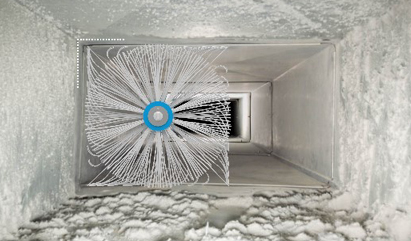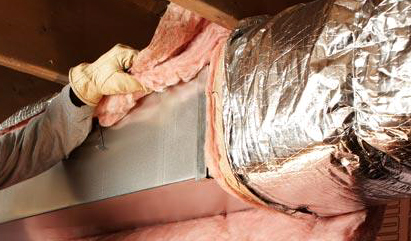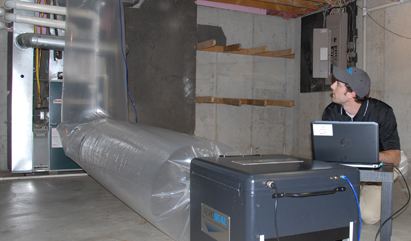Air Ducts 101: Ductwork Vs Duct Work, What’s the Difference?

When referring to the ventilation part of your HVAC system, do you say “ductwork” or “duct work”?
Small nuances like this might seem trivial, but they’re really informative.
According to the Merriam-Webster dictionary, ductwork (one word) means “ducting” or “a system of ducts.” A duct (as a noun) is defined as “a pipe, tube, or channel that conveys a substance.”
Lennox defines ductwork as: “the system of ducts (metal or synthetic tubes) used to transport air from heating, ventilation and air-conditioning (HVAC) equipment throughout your home. Properly installed and well-maintained air ducts are a key component of indoor air quality and home comfort.”
Duct work (two words) is used to describe work performed on ducts.
Let’s Recap:
- Duct: A pipe, tube, or channel that conveys a substance (HVAC ducts convey air)
- Ductwork: A system of ducts
- Duct Work: Work performed on ducts
Now that we’ve distinguished between ductwork and duct work, let’s take a deeper look at the latter: duct work.
Quality Duct Work Improves HVAC Ductwork Performance
Many HVAC contractors overlook the importance of duct work––the work performed on ducts.
It’s one thing to install best-in-class SEER air conditioning units and AFUE furnaces. It’s another thing to ensure proper duct performance for distributing conditioned air to the desired rooms/spaces in a home or building.
Here are three types of duct work that every home and building needs:


1. Duct Cleaning
As you run your home’s HVAC equipment and conditioned air gets distributed through your ductwork, it’s important to clean your ducts.
This helps you avoid the buildup of nasty stuff like dust, dirt, airborne allergens, and mold and mildew that can get blown into your living spaces.

2. Duct Insulating
During ductwork installation, it’s important to wrap the ducts with insulation. This helps prevent conditioned air from losing its temperature, which happens when the external side of ducts is at a different temperature than the inside of ducts.

3. Duct Sealing
To ensure proper duct performance, plug any holes and cracks in the ducts. This prevents heated and cooled air from leaking out before the air reaches the desired room of your home or building.
It also helps keep unconditioned air in attics, crawl spaces, and garages from entering the rooms in a home (or building). See how Aeroseal duct sealing works in homes.
Want to Learn More? Hire a Professional HVAC Expert
If you want the best for your home, it’s important to choose the best for your home.
The experts at Aeroseal are here to help you make the most out of your home’s air, heating, and cooling systems. Our duct sealing product improves your HVAC system’s energy efficiency, cutting down on energy costs.
To learn more about how Aeroseal can improve airflow and maintain more consistent temperatures, contact us today.
About Ken Summers
Vice President of Training, Aeroseal
Call: 360.201.1467
Email: ken.summers@aeroseal.com
Connect on LinkedIn













